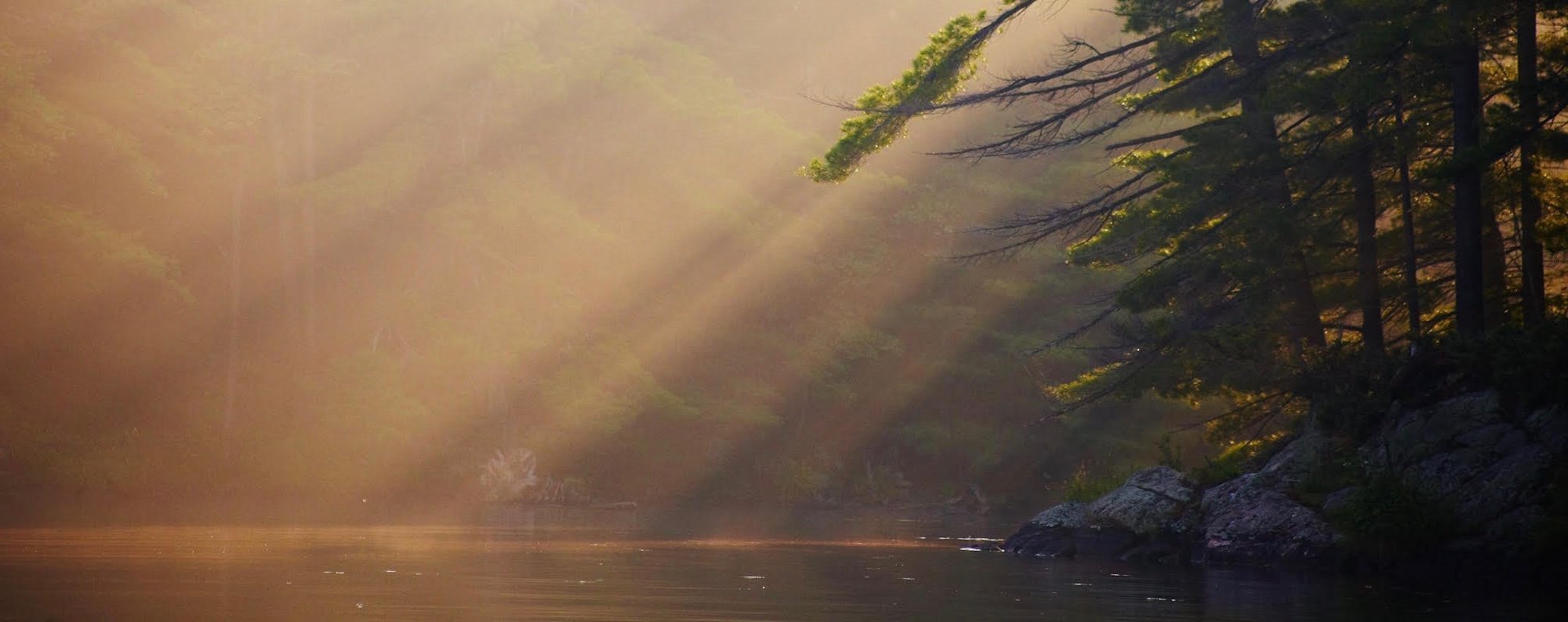Aquatic Life
Aquatic life comes in many forms on Go Home Lake and it is home to many varieties of game fish. Below is a short list of local aquatic life and when it may be appropriate to fish for them. Please be advised that it is illegal to fish on Go Home Lake without a valid Outdoors Card with the appropriate fishing tags.

Northern Pike
May 16th – Dec 30th
Northern pike are most often olive green, shading from yellow to white along the belly. The flank is marked with short, light bar-like spots and a few to many dark spots on the fins. Sometimes, the fins are reddish. Younger pike have yellow stripes along a green body; later, the stripes divide into light spots and the body turns from green to olive green. The lower half of the gill cover lacks scales and it has large sensory pores on its head and on the underside of its lower jaw which are part of the lateral line system. Unlike the similar-looking and closely related muskellunge, the northern pike has light markings on a dark body background and fewer than six sensory pores on the underside of each side of the lower jaw.
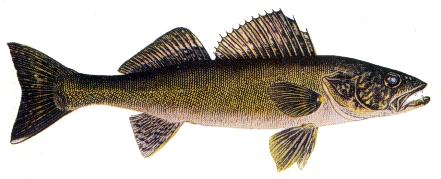
Walleye
May 16th – Dec 30th
Walleyes are largely olive and gold in color (hence the French common name: doré—golden). The dorsal side of a walleye is olive, grading into a golden hue on the flanks. The olive/gold pattern is broken up by five darker saddles that extend to the upper sides. The color shades to white on the belly. The mouth of a walleye is large and is armed with many sharp teeth. The first dorsal and anal fins are spinous, as is the Operculum. Walleyes are distinguished from their close cousin the sauger by the white coloration on the lower lobe of the caudal fin which is absent on the sauger. In addition, the two dorsals and the caudal fin of the sauger are marked with distinctive rows of black dots which are absent from or indistinct on the same fins of walleyes
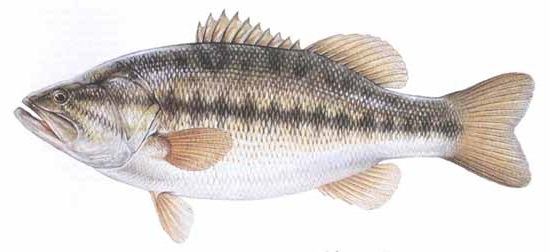
Largemouth Bass
Jun 25th – Nov 30th
The largemouth bass is an olive-green fish, in the North East right after ice-out, it most often has a gray color, marked by a series of dark, sometimes black, blotches forming a jagged horizontal stripe along each flank. The upper jaw (maxilla) of a largemouth bass extends beyond the rear margin of the orbit. In comparison to age, a female bass is larger than a male. The largemouth is the largest of the black basses, reaching a maximum recorded overall length of 29.5 in (75 cm) and a maximum unofficial weight of 25 pounds 1 ounce (11.4 kg). The fish lives 16 years on average (give or take a few years)
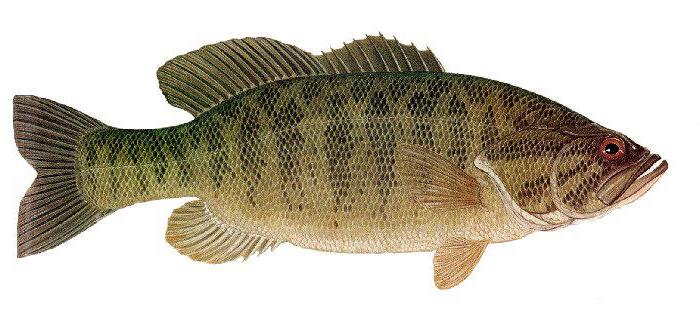
Smallmouth Bass
Jun 25th – Nov 30th
The smallmouth bass is generally brown, appearing sometimes as black or green (seldom yellow) with red eyes, and dark brown vertical bands, rather than a horizontal band along the side. There are 13–15 soft rays in the dorsal fin. The upper jaw of smallmouth bass extends to the middle of the eye. The smallmouth’s coloration and hue may vary according to environmental variables such as water clarity or prey diet. Males are generally smaller than Females. The males tend to range around two pounds, while females can range from three to six pounds. Their average sizes can differ, depending on where they are found; those found in American waters tend to be larger due to the longer summers, which allow them to eat and grow for a longer period of time.
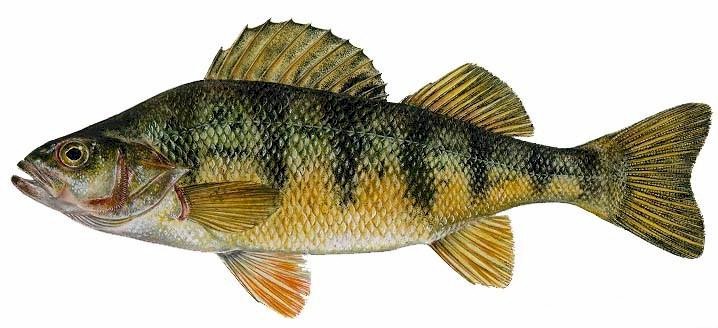
Yellow Perch
OPEN ALL YEAR
The yellow perch has a yellow to brass-colored body and distinct pattern, consisting of five to nine olive-green, vertical bars, triangular in shape, on each side. Its fins are lighter in coloration, with an orange hue on the margins. The body is laterally compressed. The anterior portion of the body is deep, gradually tapering into a slender caudal peduncle. The opercle is partially scaled, and a single spine is present on the posterior margin. As with all percid fishes, yellow perch have two dorsal fins. The anterior is convex in shape and consists of 11-15 spines. The posterior dorsal fin has a straight margin, consisting of one or two spines and 12-16 rays. The nape, breast, and belly of yellow perch are all fully scaled. A complete lateral line (50-70 scales) is present. The anal fin consists of two spines and six to nine rays. A single spine and five rays make up the pelvic fins, and the pectoral fins consist of 13-15 rays. The caudal fin of the yellow perch is forked.
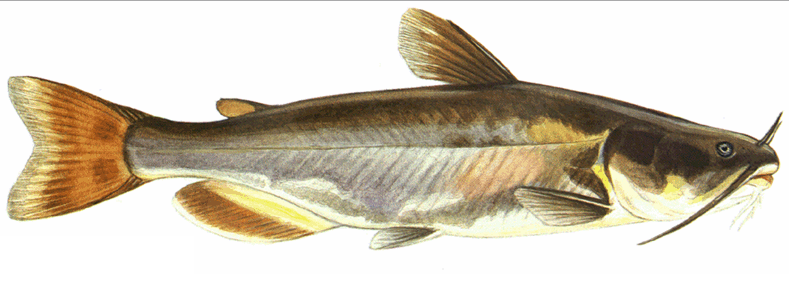
Channel Catfish
OPEN ALL YEAR
Channel catfish are the most common of the freshwater catfish and can be easily identified because of their distinctive forked tails and dark spots scattered around the body. These fish are generally more slender and have a smaller heads than other catfish. Of course, channel catfish have the characteristic long barbels, commonly called feelers or whiskers, around the mouth that help them to locate food. The anal fin consists of 24 to 29 rays, further distinguishing it from other catfish. Channel catfish come in many color variations with color depending on location and environmental conditions. One common coloring is gray or grayish-brown on top with dark brown and/or dark green dorsal fins. Others include pale blue and pale olive with a slightly silver tint. Side colors range from yellows to greens to white and there are even albino channel catfish that are white or cream colored with pink eyes. During spawning season, the dorsal area of the male may become completely black, dark blue, light blue, or silver..
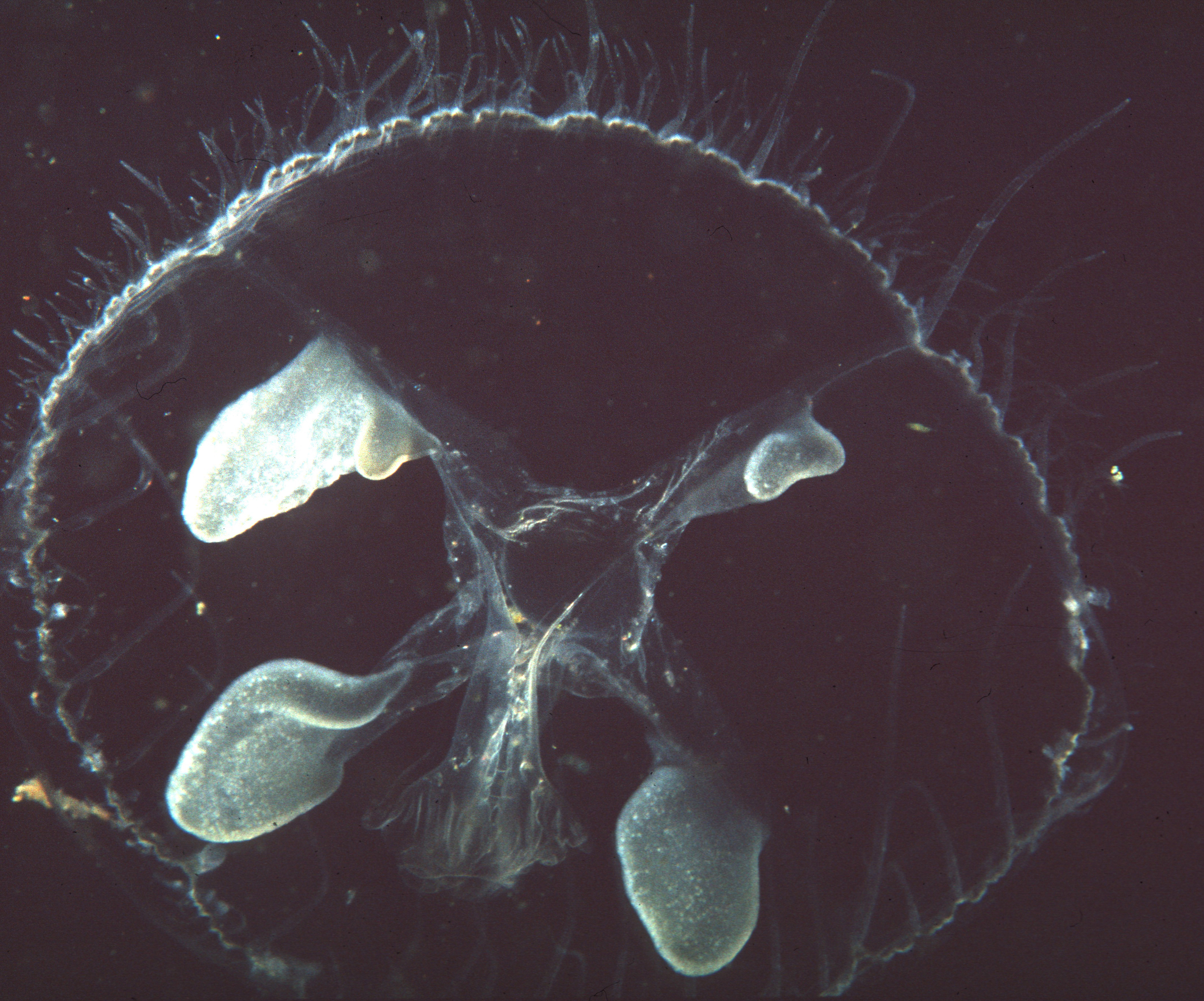
Freshwater Jellyfish
Craspedacusta sowerbii is a freshwater jellyfish. Freshwater jellyfish have a muscular, shelf-like structure called a velum on the ventral surface, attached to the bell margin. Originally from the Yangtze basin in China, C. sowerbii is an invasive species now found throughout the world in bodies of fresh water.
They have a whorl of up to 400 tentacles tightly packed around the bell margin. Hanging down from the centre of the inside of the bell is a large stomach structure, with a mouth-opening with four frilly lips. Circulation of nutrients is facilitated by four radial canals which originate at the edges of the stomach , and which are also connected to a ring canal, located near the bell margin. Most of the body is transparent or translucent, with a whitish or greenish tinge. The many tentacles each contain thousands of cells which contain nematocysts and are used to capture prey and pass it to the mouth. Food is taken in the mouth opening, and waste is finally expelled out of the same opening.
Photo by Bill Knudsen

